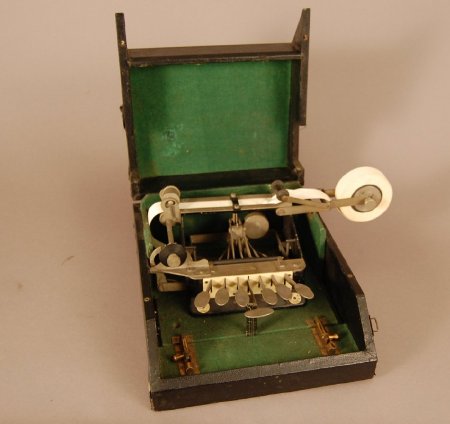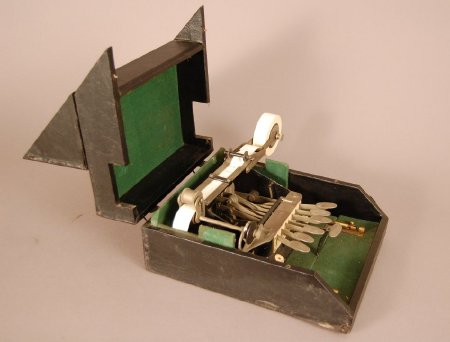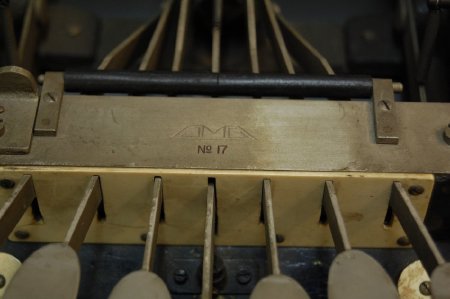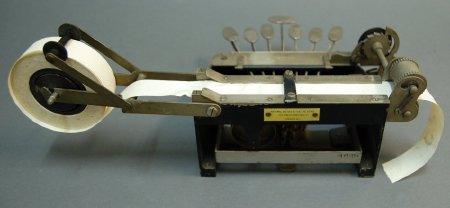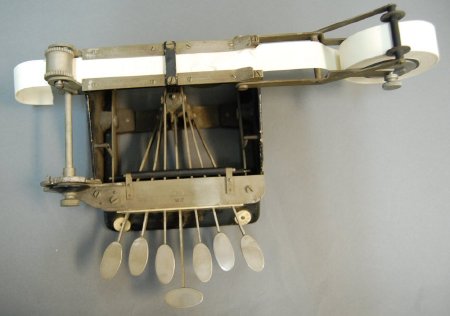Object ID:
1999.33.1-2
Title:
Stainsby "D" Braille Shorthand Writer
Description:
Portable braillewriter in carrying case is mounted on a green felt-covered removable wood base, which forms part of the carrying case. Embosses a roll of paper tape which is 15/16 of an inch in width. Folding paper-holding mechanism extends 4 1/2 inches beyond the width of the braillewriter. Has six conventional keys and a spacing key (located in the center). "JMG No. 17" is stamped on top of braillewriter; yellow celluloid tag screwed to back of frame, "National Institute for the Blind/228 Great Portland St./London, W.I."
Wooden carrying case has black leatherette covering; leather handle on right side with "STURDY" embossed on top; and hinged lid. Inside and bottom of case are lined in green felt.
.1 - braillewriter
.2 - carrying case
Wooden carrying case has black leatherette covering; leather handle on right side with "STURDY" embossed on top; and hinged lid. Inside and bottom of case are lined in green felt.
.1 - braillewriter
.2 - carrying case
Dimensions:
H-6.25 W-10 L-12.5 inches
Date:
1933
Made by:
J.M. Glauser & Sons, Ltd.; National Institute for the Blind
Place of Origin:
London, England
Provenance:
Henry Stainsby (1859-1925), Supt. of the Birmingham Royal Institution for the Blind, along with Birmingham manufacturer Albert Wayne patented a braille shorthand machine in 1899-1900. His tapewriter was developed as a note-taking tool for blind stenographers being trained at Birmingham. Stainsby's goal was employment for his students. By the 1920s, the Stainsby-Wayne Braille Shorthand Writer was being sold by the National Institute for the Blind. In 1933, this version was introduced. It was replaced by 1936 by the Model E.
Credit Line:
Museum Purchase, 1999.93

